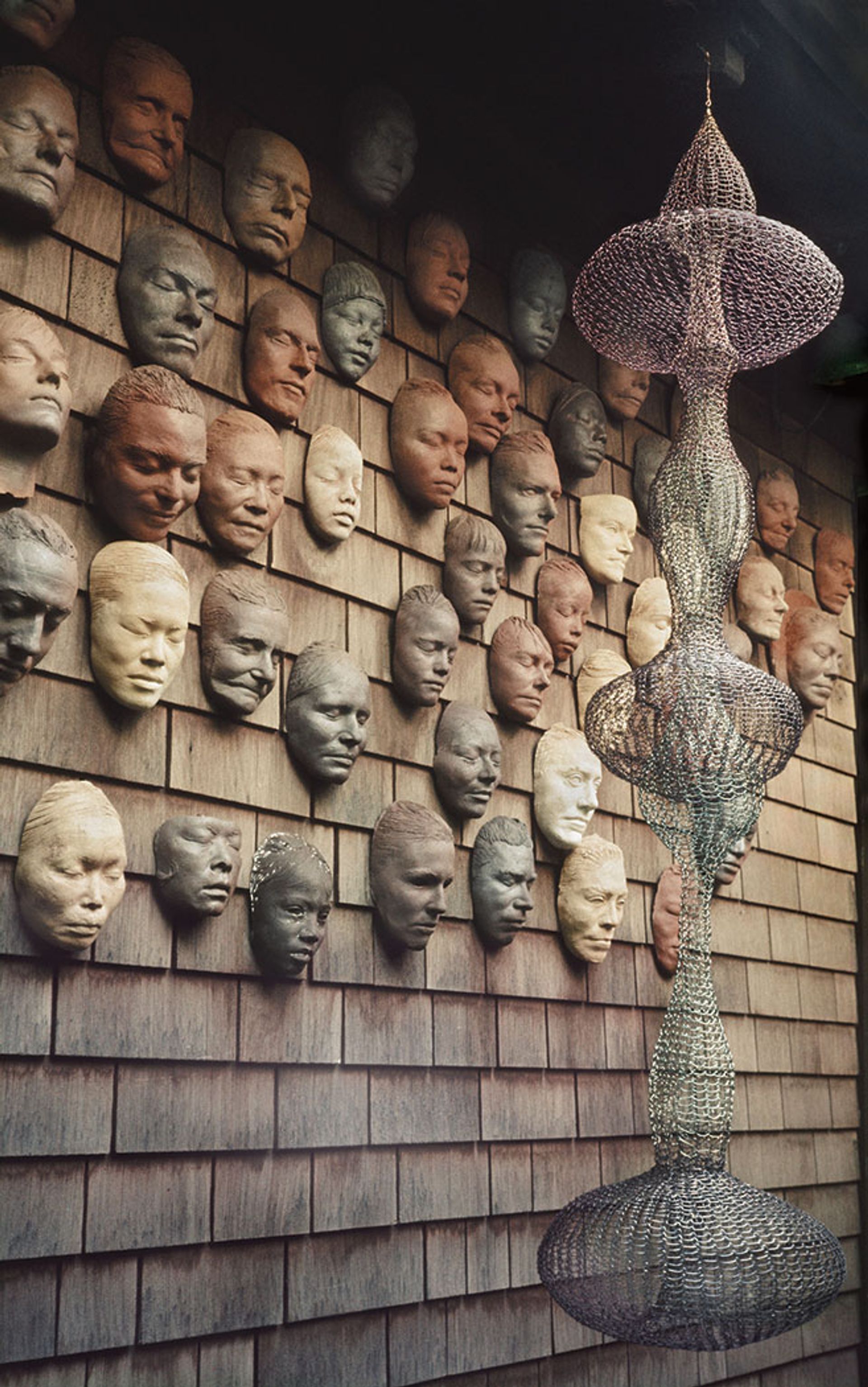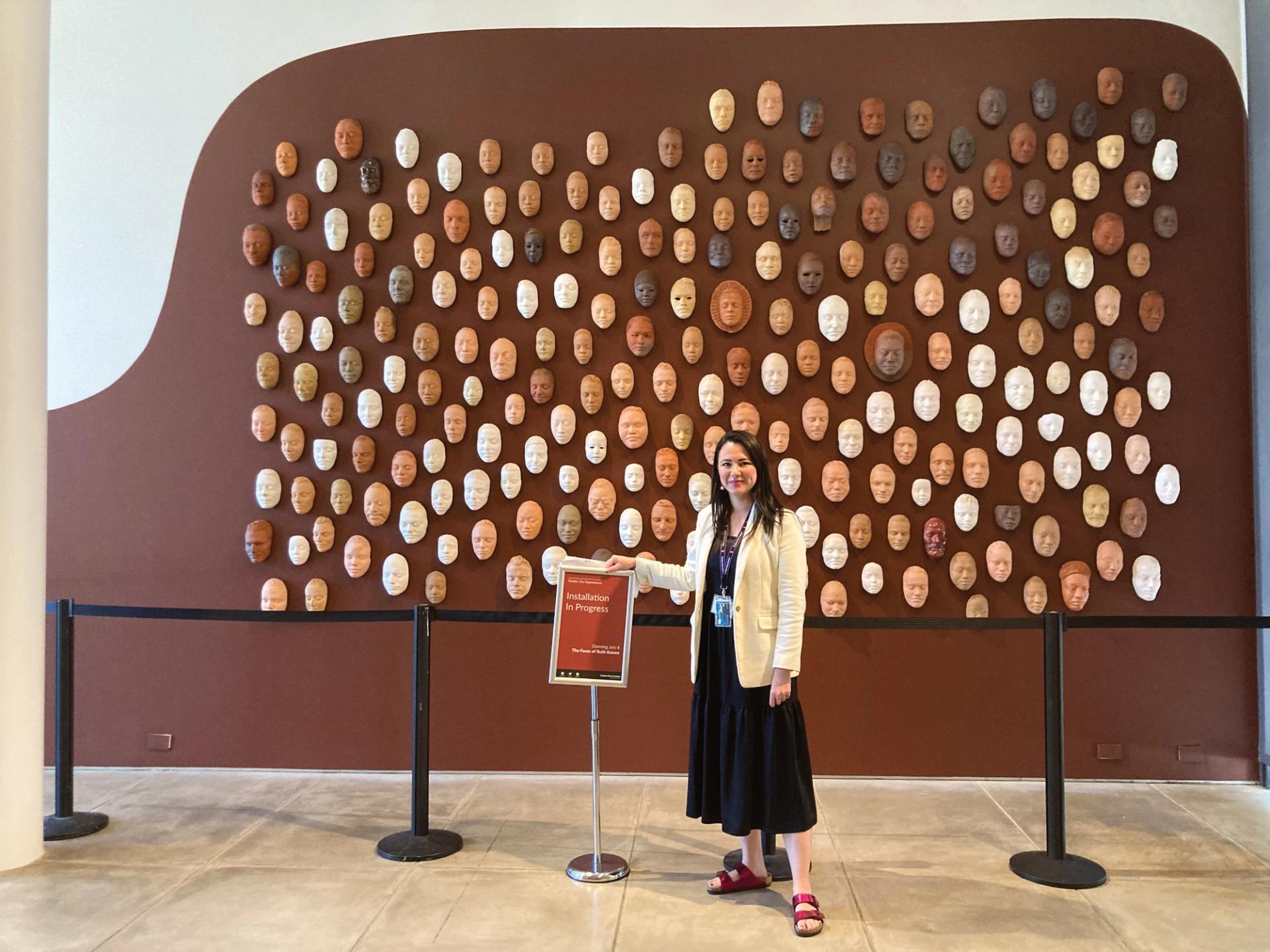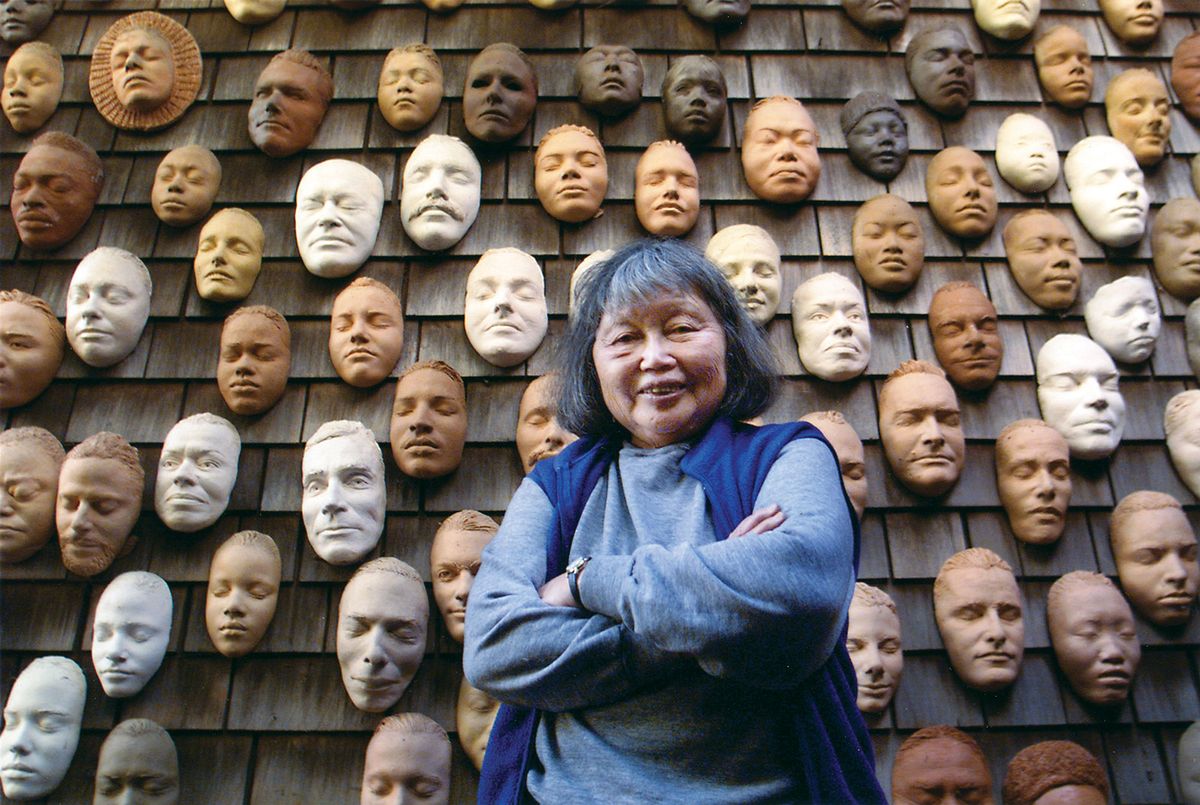In 1966, after a decade of exhibiting the looped-wire sculptures that would make her famous, Ruth Asawa started making plaster masks of family and friends as the basis for bronzes or, more often, ceramics. She practised frequently on her children, including her youngest, Paul Lanier, who went on to become a ceramic artist himself.
He remembers lying down on a covered mattress, having his face smeared with a thin coat of Vaseline and feeling the “cold and creamy” plaster on his skin, starting when he was six or seven years old. His mother described the steps of the process to him along the way in the careful, soothing voice of an attentive doctor or masseuse. “It’s potentially dangerous because you’re putting plaster over someone’s eyes,” Lanier says. “I would never go on YouTube and teach people how to do that.”
Despite the technical challenges, over the next three decades Asawa ended up making hundreds of these finely detailed, highly expressive masks: her children at different ages, public schoolchildren, friends and local artists included. She typically made two clay masks from each original: one to give to the sitter and the other to hang on the brown, shingled, exterior wall of the San Francisco home she shared with her husband, Albert Lanier, and their six children. At the time of her death in 2013, hundreds of masks hung clustered together on that wall, creating a spooky Halloween destination for neighbourhood kids.
It also represents one of Asawa’s least known but most ambitious works, making its debut on 6 July at the Cantor Arts Center at Stanford University. Two years ago, the museum acquired 233 masks from the wall for an undisclosed price, with the expectation that they remain on display. (A few dozen from the wall had been set aside by family members, who also own some other masks that were shown at David Zwirner in New York last year.)

Asawa’s wall of masks, and one of her famous wire sculptures. Photo: Laurence Cuneo © 2022 Ruth Asawa Lanier, Inc/Artists Rights Society (ARS), New York; courtesy of David Zwirner
Aleesa Pitchamarn Alexander, an assistant curator at the Cantor, says that the work reveals Asawa’s role not just as a community activist but as a visual historian or archivist. “She was making such a statement by having these masks on the entryway of her house. It was a way for her to say: ‘This is my community, this is who matters to me, and every person is worthy of becoming a work of art.’” She calls the acquisition “the foundational purchase” for the university’s Asian American Art Initiative, which she co-directs.
Moments captured in clay
Asawa’s youngest daughter, Addie Lanier, says the mask-making, usually done at home with visitors on an impromptu basis, reflects her mother’s sense of hospitality. “It was very Japanese; she always gave people things she made like plum jam, loquat chutney, pickles,” she says. “And then she would give you a mask, too.”
Alexander also sees Asawa’s practice of mask-making in connection to other domestic activities that the artist enjoyed, like cooking and gardening. “It’s really powerful from a feminist perspective to think about the domestic sphere as a central hub for creativity,” Alexander says. “In this case, it was noisy, vibrant, maybe chaotic—and far from whatever trope we might have of the solitary male artist working in his studio.”
Asawa herself told an interviewer in 2002 that mask-making was her way of freezing time, taking a snapshot without the use of photography. “When I cast a face, I know I’m just capturing a minute of a person. Or if I cast a foot of a baby, I know that baby’s foot will grow and grow and grow,” she said. “I know it’s going to go away, but I like that moment.”
The acquisition came about after Asawa’s eldest daughter, Aiko Cuneo, reached out to Alexander in early 2019 to offer the loan to the Cantor. “Aiko cold-called me on my office phone and asked if I wanted to borrow a large, hanging, lobed wire sculpture because they were taking it down from the San Francisco Museum of Modern Art and didn’t want to take it back to storage,” Alexander remembers. It was no-brainer for her to accept that work, she adds, noting that “it’s something that we don’t have and probably couldn’t afford”.
A timeline of visitors
Conversations about the masks coming to Stanford, which already housed Asawa’s papers, developed from there. Since the acquisition, 52 of the masks have undergone conservation, focusing mainly on flaws that developed after the manufacturing process such as stains or cracks, while Alexander engaged in research to identify the masks that didn’t have full names inscribed on the verso. Some of the more recognisable figures include the photographer John Gutmann, the painter Gwendolyn Knight and the actor-writer Anna Deaveare Smith. A full 32 sitters in the Cantor installation remain “completely unidentified”, Alexander says.

Curator Aleesa Pitchamarn Alexander during installation at Cantor Arts Center at Stanford University Photo: Jori Finkel
The Cantor installation, The Faces of Ruth Asawa, echoes the artist’s original façade in its basic arrangement, which Lanier says was “not a curated grouping” but more “a timeline of people who walked through the doors”. Alexander chose a mahogany brown for the Cantor wall colour to evoke that shingled wall. She has also opted to display, alongside the masks, three pots made by Paul Lanier that are on loan from the family: rugged, stoneware vessels that incorporate some of the cremated remains of his mother, father and brother, Adam, in the clay.
“My dad kept saying we’re going to be made into a glaze and put onto a pot when we die, and Paul should do it because he’s a ceramic artist,” Paul Lanier says. “But he was a very funny storyteller from Georgia, so I didn’t know if he was joking. It was too creepy to even think about as a young man.”
As it turned out, his parents were serious, even putting this request in their wills. So he carried out their wishes, ultimately deciding to work the ashes into the clay itself instead of the glaze. He fired the pots in an anagama, a traditional Japanese wood-fired kiln, over a seven-day period. He says the pots are exceptionally strong, for the same reason bone china is, and lustrous with yellow-orange and coppery streaks. “Some of them had amazing colours,” he says, “like I’ve never seen before.”


